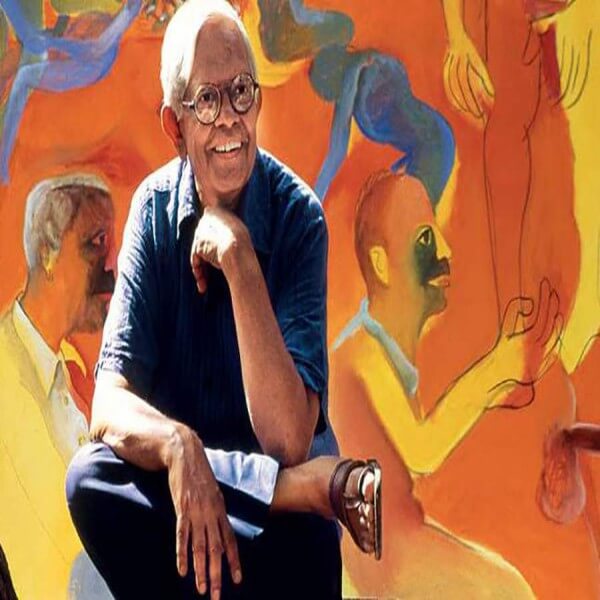Bhupen Khakhar
ABOUT
Khakhar was a self-trained artist, His works were figurative in nature, concerned with the human body and its identity
Painter | India
Born in 1934
Died in 2003

Bhupen Khakhar was India’s first openly gay artist, and he chose to speak his mind through his art. Khakhar was a self-trained artist, His works were figurative in nature, concerned with the human body and its identity. His paintings often contained learned references to Indian mythology and mythological themes. Khakhar was renowned for his unique figurative style and insightful observations of class and sexuality. He played a pivotal role in modern Indian art and was a prominent international figure in 20th century painting. Starting from the 1980s, he made alternative sexuality his dominant subject, through which he articulated the everyday life, fantasies, anxieties and aspirations of the homoerotic self. It seems completely ludicrous to discuss the question of Bhupen Khakhra’s legacy in a country that legally regards the most defining aspects of his life and art as criminal behavior. For Bhupen, growing up as gay in Khetwadi, Mumbai, in the 1950s and ’60s was a lonely and frightening experience. He was the only gay person. There was absolutely no one to talk to,” he told in an interview. In his 20s, Bhupen was the pride of his family. Having graduated with a degree in commerce from Sydenham College, he had passed the chartered accountancy exams and taken up a job with AF Fergusons He has always been open about his homosexuality and his work. Paintings like two men in Banaras (1985) and Yagati (1987) which the economist calls “explicit depictions of desire”, featuring male nudes in close embrace. Like many men with unhappy personal lives, Bhupen wanted to find fulfillment in his work— but accountancy just didn’t make the cut. He had taken a part-time course in painting at the JJ School of Art in Mumbai and at the age of 27, he finally made a break, quitting his job and moving to Baroda to join his friend Ghulam Sheikh at the Baroda School of Fine Arts. His arrival there coincided with the formation of what has come to be called the “Baroda School” of narrative painting. Living independently, free from family pressures, Bhupen blossomed as a person and as an artist. His early paintings depicted the lives of the lower middle class— tailors, cobblers, watch repairers — with whom he felt a deep empathy. The empathy had a lot do with the gay lifestyle of those times, when barriers of class, caste and religion were broken. Brian Weinstein, retired professor of political science at Howard University, Washington DC, is a collector Bhupen’s works and knew him well. He says: “Bhupen was always interested in the ordinary, often ‘ugly’ people (he considered himself to be ugly) in his surroundings. He admired their inner beauty, no matter how they appeared to others.” Bhupen’s later paintings, which were more explicit, once again reflected his sexual preferences, featuring older men, with sagging bodies and white hair. At his house in Baroda, he had a wall full of portraits he had done of former lovers. “Most of them are dead,” he said, with the droll humor I later came to know he was famous for. “It’s hard finding older men at my age.”